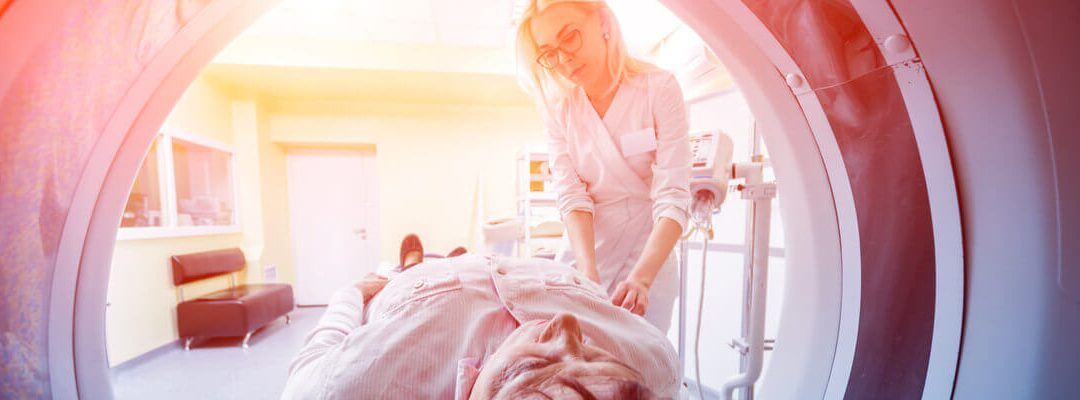Computed Tomography
7 Things You Need to Know to Get ARRT® Computed Tomography Certified
Posted on April 10, 2025

If you're a radiologic technologist looking to level up your career and specialize in Computed Tomography (CT), passing the ARRT® CT Certification Exam is your next big move. Computed Tomography is an excellent modality and offers rewarding career opportunities, but obtaining certification involves several steps and requirements that you need to fully understand.
In the past, becoming a CT tech often meant waiting for a job opening at your hospital or being invited to cross-train by your manager. However, the process has changed now, and it's a little more complicated than that. This guide outlines the seven essential things every aspiring CT tech needs to know before taking the ARRT® CT Certification Exam.
1. Exam Eligibility Requirements
Not everyone can sign up for the CT exam. To be eligible, you must first meet a series of ARRT® requirements for certification in CT. These include education, hands-on experience, and, in some cases, an ethics review.
ARRT® Eligibility Checklist:
- Hold an ARRT® primary credential in radiography, nuclear medicine, or radiation therapy
- Complete 16 hours of structured education (SE) covering specific content categories
- Document 125 verified CT procedures as part of your clinical experience
- Undergo an ethics review (if applicable)
After these steps, your supervisor or program director must confirm your clinical experience. Only then can you schedule your CT certification exam through your ARRT® account.
About the Ethics Review
If you’ve had professional or legal issues in the past—such as substance abuse or license suspensions — you may be required to undergo an ethics review. This can take time, so honesty and early disclosure are key. Trying to bypass this process could lead to disqualification from ARRT® certification altogether.
2. Structured Education: What it is and How to Complete it
ARRT® doesn’t require CT candidates to complete a college-based program, but it does require proof of structured education—a formal learning process approved by ARRT® that prepares you for the exam content areas.
What Counts as Structured Education?
Structured education can be completed through:
- College courses approved by ARRT®
- Continuing education programs
You’ll need to complete at least 1 credit hour in each of the following categories:
- Patient Care
- Safety
- Image Production
- Procedures
You are required to have a total of 16 hours, and these must be completed within 24 months of the date you apply for the CT certification exam.
How to Report Structured Education
You’ll report your credit hours through your personal ARRT® online account. It’s recommended to keep detailed records and confirm that each course you complete aligns with ARRT®’s structured education requirements.
3. Gaining Clinical Experience: The Toughest Step
For many aspiring CT technologists, fulfilling the clinical experience requirement is often the most challenging part of qualifying for the ARRT® CT Certification Exam. Getting hands-on access to a CT scanner isn’t always easy if you are not already employed in a hospital or care facility.
To meet the ARRT® requirements, you must document competencies in 125 total CT procedures. But not just any procedures — they must be spread across a range of specified categories. Performing 125 identical head CTs without contrast, for instance, will not satisfy the requirement.
ARRT®’s clinical experience checklist:
- Eligible procedure types (with and without contrast)
- How often each procedure type can be counted
- Documentation standards and sign-off requirements
Surprisingly, the individual verifying your clinical procedures doesn’t have to be a certified CT technologist. Crazy, I know, but this makes sense in some situations where registered CT technologists may not be available. According to ARRT®, any registered radiographer or interpreting physician is qualified to confirm your clinical competencies.
Pro Tip: Start looking for clinical training sites EARLY — ideally during or immediately after completing your structured education.
4. What’s on the ARRT® CT Certification Exam?
The CT exam isn’t just a simple test of textbook knowledge. It’s a comprehensive assessment designed to evaluate your understanding of critical CT concepts across four major domains. Understanding the format and topics in advance gives you a competitive edge.
As of June 2025, the ARRT® CT Certification Exam includes 165 scored questions, categorized as follows:
- Patient Care: 22 questions
- Safety: 22 questions
- Image Production: 50 questions
- Imaging Procedures: 71 questions
In addition to these, the exam contains 20 unscored pilot questions. These are mixed in with the graded ones and are used for future test development, but you won’t know which ones are which — so treat every question with equal importance.
Important Notes:
- Questions are NOT grouped by category in the actual exam. You’ll encounter them in random order, making it even more important to be well-rounded in your study approach.
- The exam is periodically updated, and using an old review book from even a few years ago could set you up for failure. Stick with reputable and up-to-date resources (like Clover Learning), which are known for aligning closely with current ARRT® standards.
5. Exam Format and How to Prepare Strategically
The ARRT® CT exam uses a variety of question formats to assess both your theoretical and practical knowledge. Here’s what you can expect:
Common question types:
- Multiple-choice (most of the exam)
- Multi-response (select all that apply)
- Sequencing (arranging items in the correct order)
- Image-based (i.e., identifying anatomy on a scan)
- Short video clip interpretation
Formats you won’t see:
- True/False
- Matching
- Fill-in-the-blank
- Short answer
You’ll have 3.5 hours to complete 185 total questions (165 scored + 20 unscored). That gives you just over a minute per question. Use your time wisely by flagging difficult questions and returning to them later. Prioritize accuracy on the easier ones — it can make all the difference in your score.
Pro Tip: Simulate exam conditions by taking full-length practice tests. The better your pacing, the more confident you’ll feel on test day.
6. What If You Don’t Pass the First Time?
First, don’t panic — failing the CT Registry Exam doesn’t end your journey. You are allowed three years and three total attempts to pass the CT exam from the date of your application.
If you fail all three attempts or let the three years expire, you’ll need to start over completely, including your clinical experience documentation.
What’s a Passing Score?
A passing score on the CT registry exam in radiography is 75. Not 75%, but a scaled score of 75. According to ARRT®:
Our exam scoring scale ranges from 1 to 99, and you’ll need a total score of 75 to pass the exam. This isn’t a percentage; the number of correct answers necessary to obtain a scaled score of 75 may vary. For example, on some exam versions, you might need to correctly answer 131 of 200 questions to receive a scaled score of 75. On more “difficult” exam versions, you might need only to answer 130 of 200 questions correctly to receive a 75 scaled score. Scaled scoring is a standard practice in the assessment industry, and is commonplace in both public education and certification examinations.
First-time pass rates from recent years:
- 2023: 73.1%
- 2024: 73.9%
In general, most candidates do pass on their first try — especially with solid preparation.
7. State Licensing: Not Always Automatic
Passing the ARRT® CT Certification Exam does not guarantee you are licensed to practice CT in your home state. Each state has its own rules and regulations.
Three common models of state licensure:
- No licensure required (surprisingly, still true in a few states)
- Only ARRT® certification required
- ARRT® certification plus additional state-specific licensure
Be sure to check your state’s radiologic licensing board to understand what’s required after certification.
Final Tips for CT Exam Success
- Start early: Get your structured education and clinical experience started as soon as possible.
- Use current resources: Outdated materials can cost you the exam.
- Practice under pressure: Simulate the exam to improve time management.
- Ask questions: Don’t be afraid to reach out to mentors, instructors, or resources like Clover Learning for guidance.
Are you ready to start your journey toward CT certification?
Achieving your ARRT® CT Certification isn’t just about passing a test — it’s about preparing strategically and positioning yourself for a successful career in computed tomography.
Remember: this is hard, but it’s worth it. And you’re not alone — join Clover Learning today and gain access to hundreds of byte-sized video lessons, Qbanks, and Mock exams designed to help you prepare for your ARRT® CT Certification exam.
FAQs about the ARRT® CT Certification Exam
1. How long does it take to get ARRT® CT certified?
It typically takes several months, depending on how quickly you complete structured education and clinical requirements.
2. Can I take the CT exam without clinical experience?
No. ARRT® requires verified documentation of 125 completed procedures before you can sit for the exam.
3. How often can I take the CT certification exam?
You are allowed up to three attempts within three years of your application date.
4. Do I need to attend a college program to qualify?
Not necessarily. You can meet structured education requirements through continuing education programs approved by ARRT®.
5. Does passing the ARRT® CT exam guarantee licensure in my state?
Not always. Some states have additional licensing requirements beyond ARRT® certification. Be sure to check your state’s radiologic licensing board to understand what’s required after certification.

Ari Blum - Founder CEO
As the Founder and CEO of Clover Learning, Ari has been leading a healthcare e-learning company that provides online courses and certification programs for radiologic technologists and other medical professionals since 2016. With his radiology background and interdisciplinary studies in healthcare and business management, he has a unique perspective and expertise in creating and delivering high-quality and engaging educational content for the healthcare industry.